Part 3: Let's Talk About Hex, Baby
(with apologies to Grinnblade because seriously that title was just too damn good)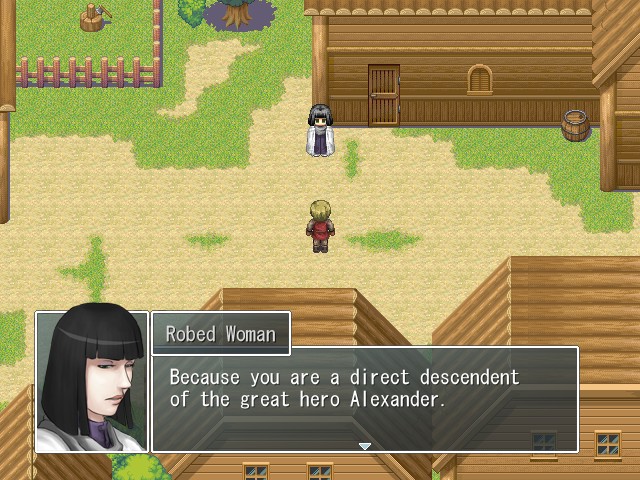
Welcome back. Last time on Last Scenario, after an ill-fated attempt to rescue a cat, Hilbert met a mysterious robed woman named Zawu. According to her, Hilbert is a descendant of the legendary hero Alexander, and he is destined to stop the resurrection of the demons his ancestor defeated three centuries ago. Trusting in Zawu's words and the seal of Alexander she gave him, Hilbert has decided to head to the capital of the Republic and join the army, so that he can train and make a name for himself in time for the demon awakening. But today, we're going to be forgetting about all that. This is an RPG and there's no time limit, so let's play some minigames!
Music:

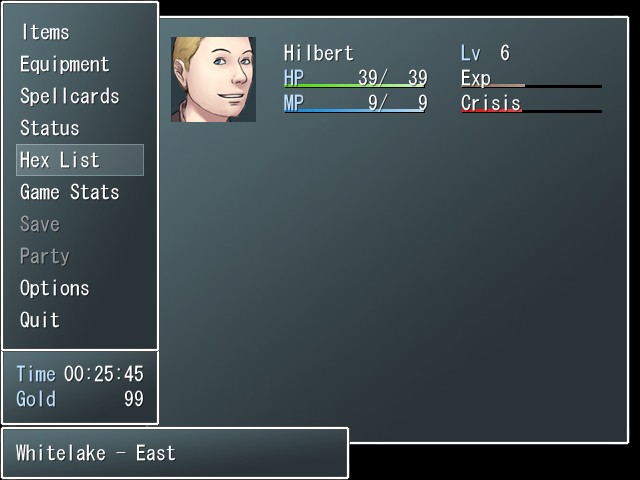
It's time for me to explain a part of Last Scenario that I mentioned quite a bit in the first two updates: Hex. And that means we're going to be taking a look at the Hex List menu option that I glossed over.
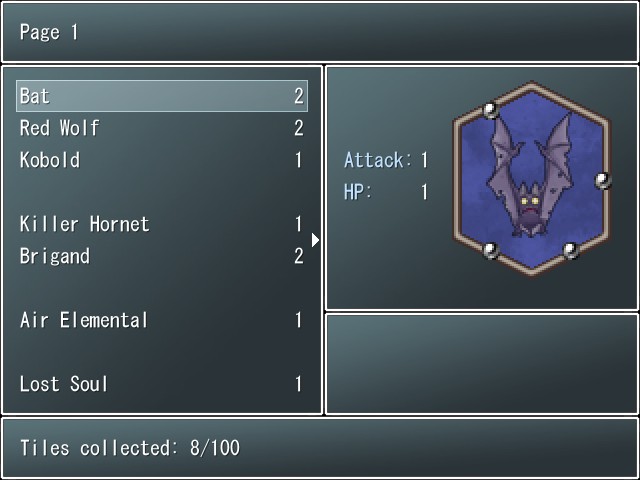
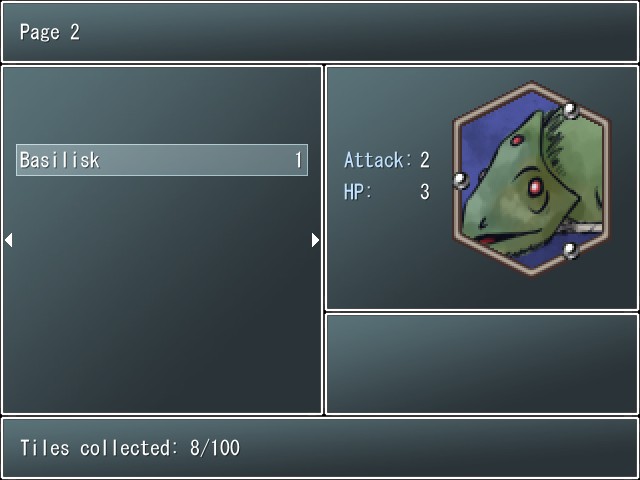
Hex is Last Scenario's main minigame, and as its name implies, it is a game played with hexagonal tiles, most of which are based on monsters in the main game. At its core Hex plays somewhat like a trading card game, in that each player creates a "deck" of tiles from their collection to use when they play. The Hex List menu option allows us to view our collection of acquired Hex tiles and check out their individual characteristics. I'll explain what these mean in a moment, but for now you can see that all tiles have three characteristics: two numerical stats, Attack and HP, and a third feature I'll call "reach," shown by the dots on the edges of the tile. A tile's reach shows the directions that it can attack when placed next to other tiles.
If you're wondering where all these tiles came from, by the way, it's because the vast majority of them were actually in our inventory when we started the game. Every tile you see here except for the Basilisk (which the Cave Griffin dropped) are automatically given to the player to start with.
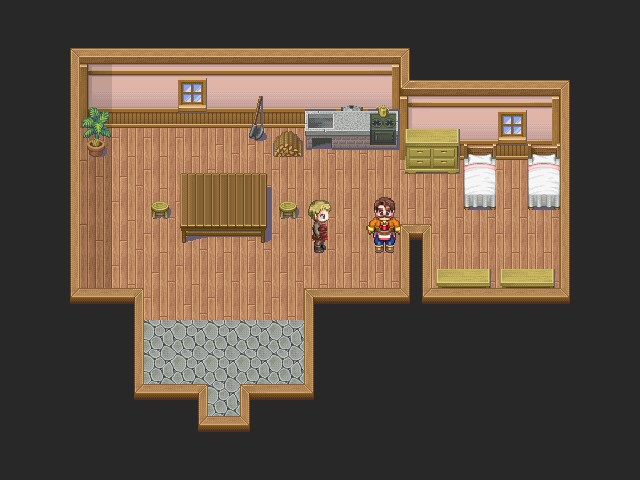
Now, how do we actually start a game of Hex? Well, as I mentioned in the first update, Last Scenario uses a third button aside from interact/accept and cancel: a "Hex challenge" button. In the previous update Eugene here mentioned that he was the only Hex player in Whitelake aside from Hilbert, so we'll demonstrate on him.
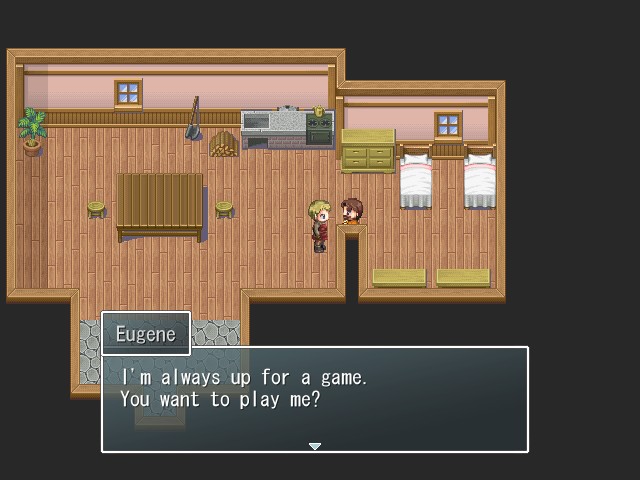
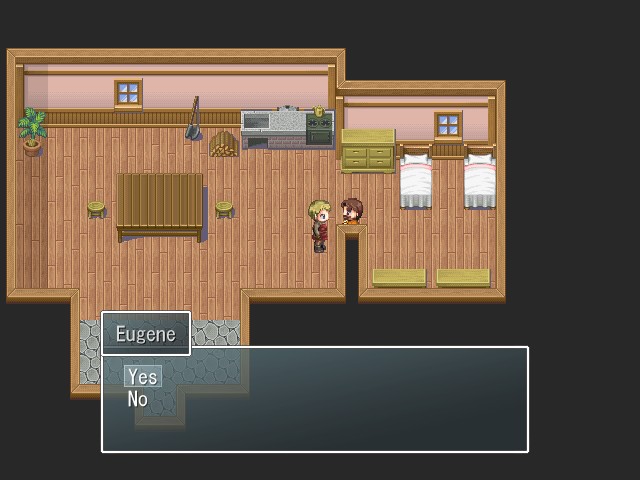
A fairly small subset of the NPC population in Last Scenario plays Hex, but there's no way to tell who plays and who doesn't without challenging them to a game. If you challenge someone that doesn't play, they'll just act as though you tried to talk to them normally, but if they do play, they'll offer to play a round with you. It should be noted that once you confirm you want to play, you can't back out of the game. This is somewhat important for reasons we'll see in a moment.
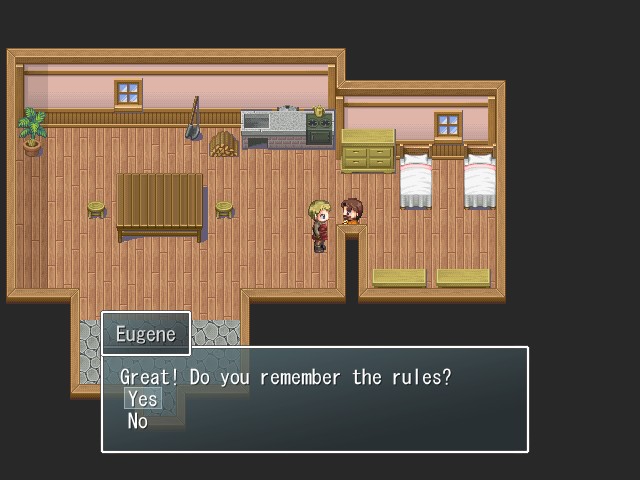
Eugene here can give us an explanation of the rules if we want, but it's a bit long-winded and Hex is best explained by example anyway, so we'll skip it.
Music:

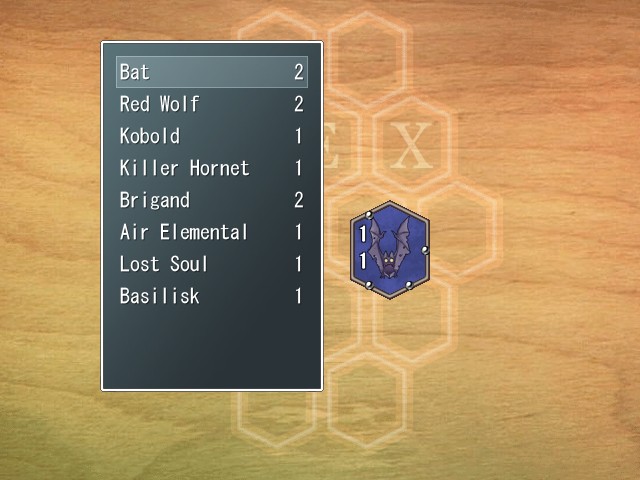
The first step to playing a game of Hex is to construct a hand of seven tiles from our collection. There's no rule against using identical tiles in your hand, but you'll need to have multiple copies of the tile in your collection in order to do that.
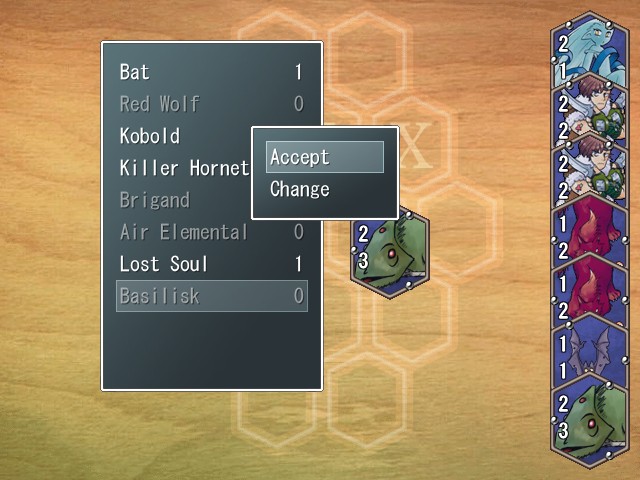
For this game, my hand will consist of (from the top) an Air Elemental, two Brigands, two Red Wolves, a Bat, and a Basilisk.
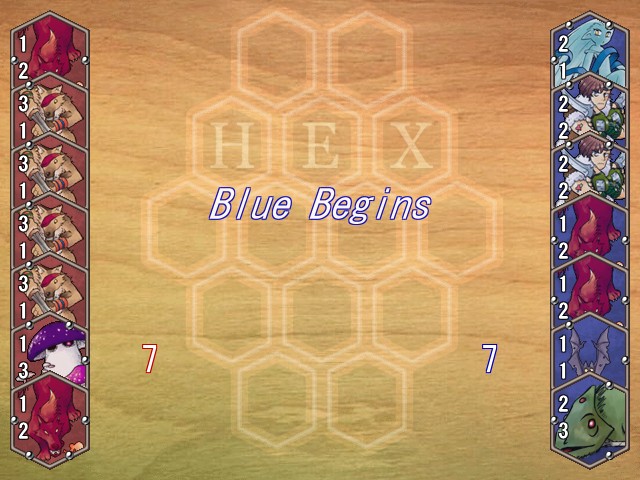
Once we've selected a hand, the game will show us our opponent's hand. Eugene has two Red Wolves of his own and a whopping four Kobolds, along with a Blackhat, a tile we don't own. Following that, the game randomly determines who starts. (We're always blue, by the way.)
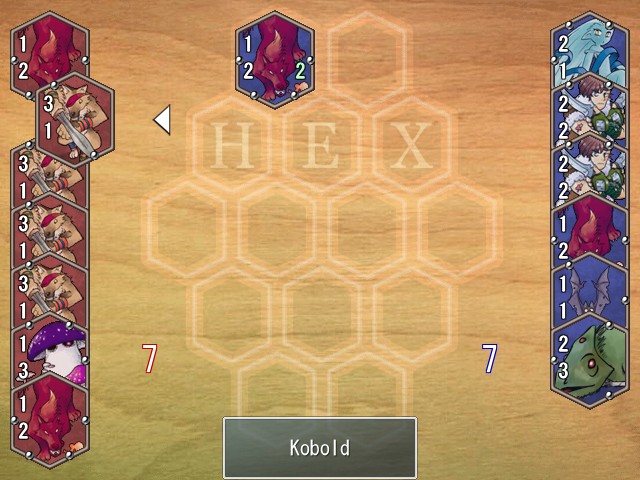
The game flow of Hex is straightforward: we and our opponent will alternate placing tiles on the 14 hexes of the game board. The objective of the game is to have more tiles of your color on the board after all 14 tiles have been placed. In order to do that, each player needs to attack and kill their opponent's tiles, which causes the tiles to switch color.
To begin with, I place a Red Wolf at the top of the board. You'll notice that there are three numbers on it, despite tiles only having two numerical stats. The top white number is the tile's attack power, while the bottom white number shows the tile's maximum HP. The green number is the tile's current HP, which starts at the max and decreases as the tile gets attacked.
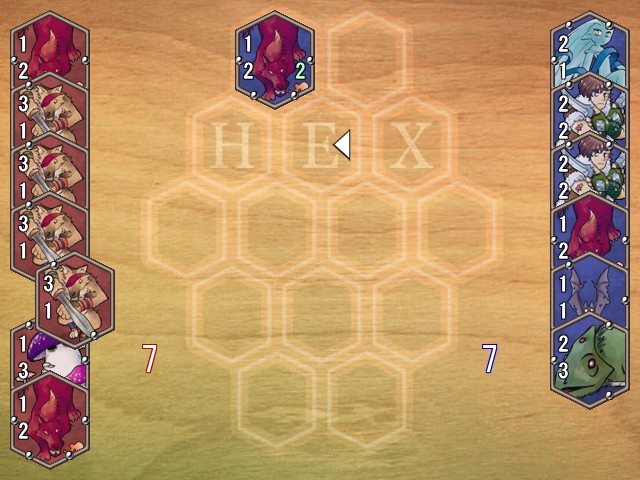
Eugene opts to place one of his many Kobolds on the E in Hex. When a tile is placed adjacent to an existing tile, a few things happen.
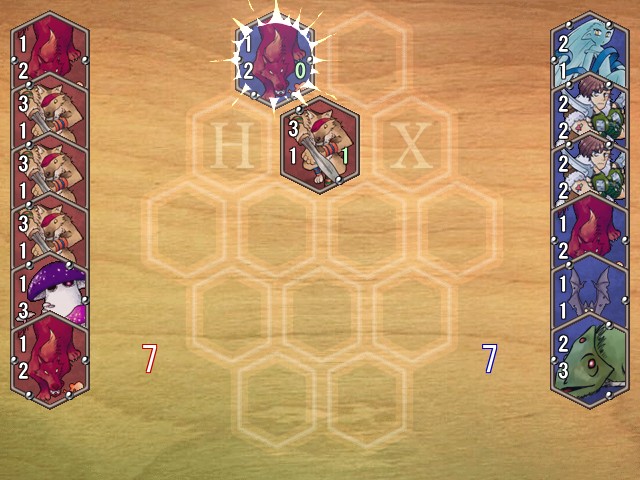
First, the newly-placed tile attacks all tiles of the opposite color in its reach, indicated by the dots on its edges. Any tile that gets attacked loses HP equal to the attacking tile's attack power, so my Red Wolf is now dead.
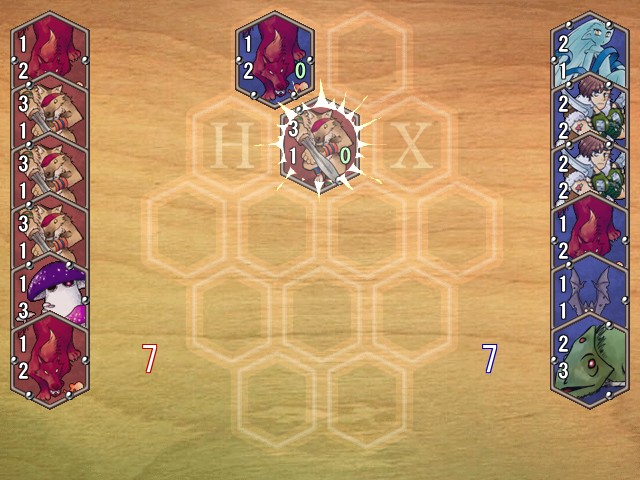
Second, once the newly-placed tile has attacked everyone it can, the opponent's tiles get a counterattack. Every tile of the opposite color that can reach the newly-placed tile attacks it. It is very, very important to note that a) this includes tiles that weren't attacked by the newly-placed tile and b) this includes tiles at 0 HP. Since the newly-placed Kobold is within my Red Wolf's reach, the Red Wolf gets a counterattack and kills the Kobold as well.
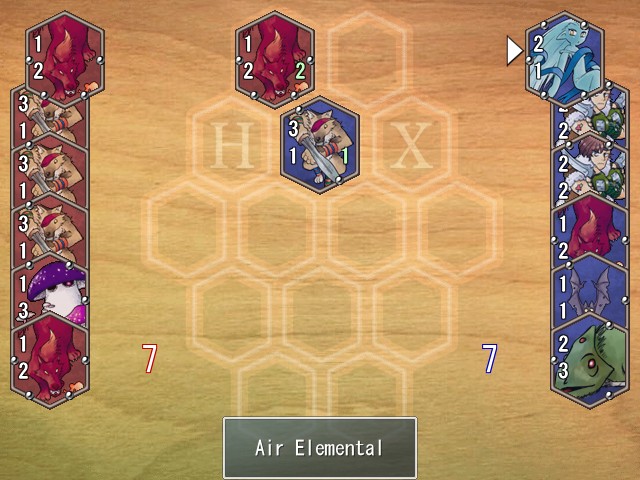
Finally, after all of the attacks are done, all tiles at 0 HP flip to the opposite color, and the next player gets a chance to place a tile. Any tile that flips has its HP restored to its maximum, but tiles missing only a portion of their HP remain at however many HP they have left.
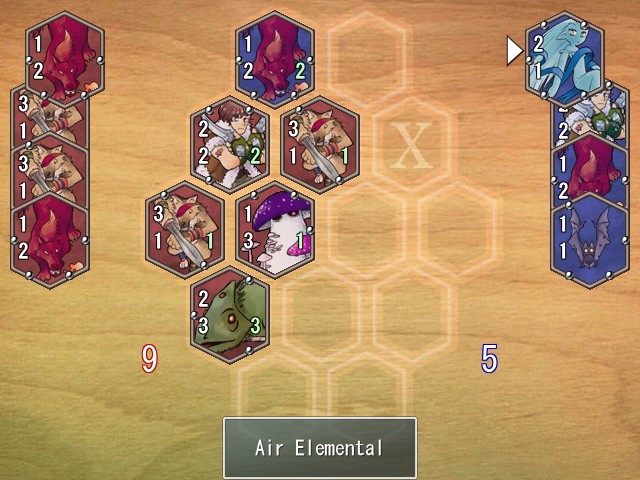
I'm not going to give a play-by-play for my Hex games because that would get boring really fast, but there are some general strategies you want to consider. Most of the strategy is fairly intuitive: attack enemy tiles from their blind spots, don't leave blind spots open on your own tiles if you can help it, and stuff like that. When you attack is also as important as how you attack--a tile that gets flipped can be flipped right back to its original color later, so immediately attacking every tile your opponent places can actually work against you in the end. You generally want to try to ensure that tiles are your color once they've been completely surrounded and can no longer be attacked, something I've let Eugene get away with with the tiles in the upper left in the above shot.

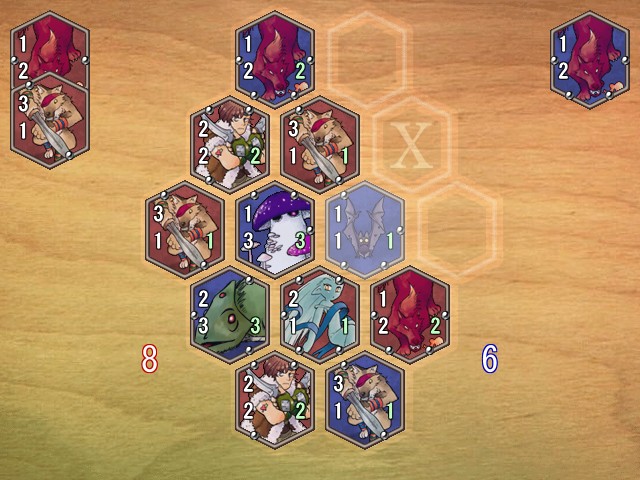
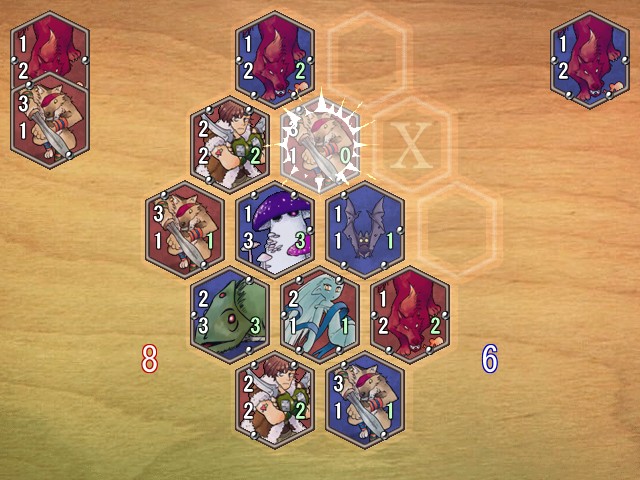
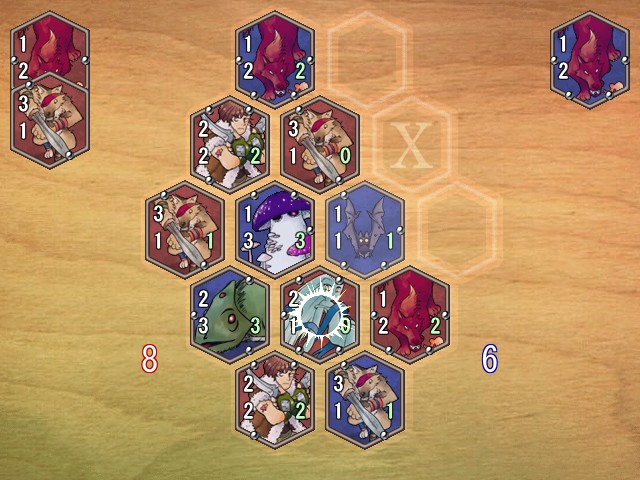
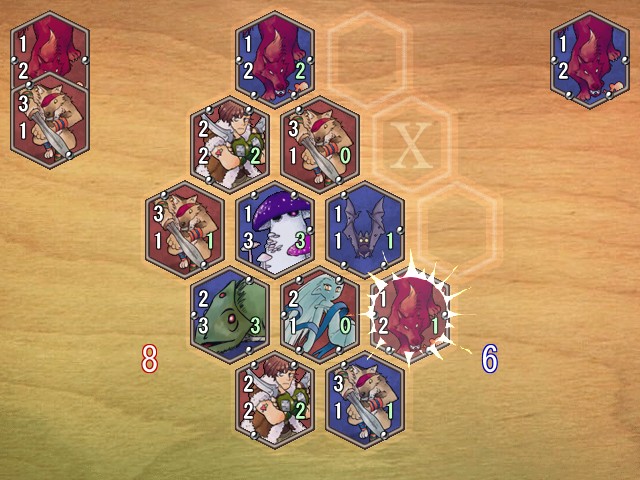
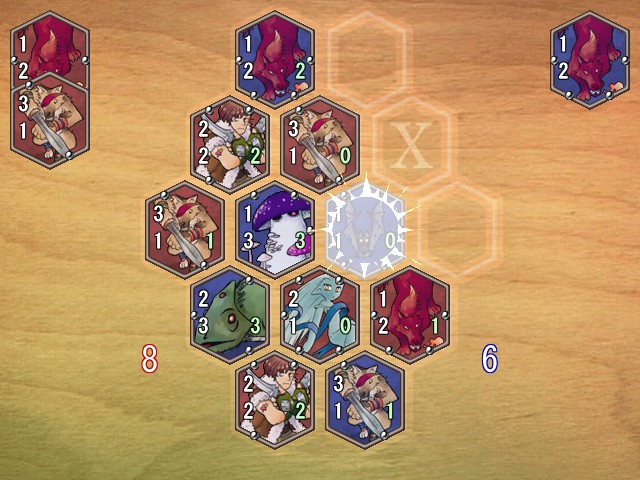
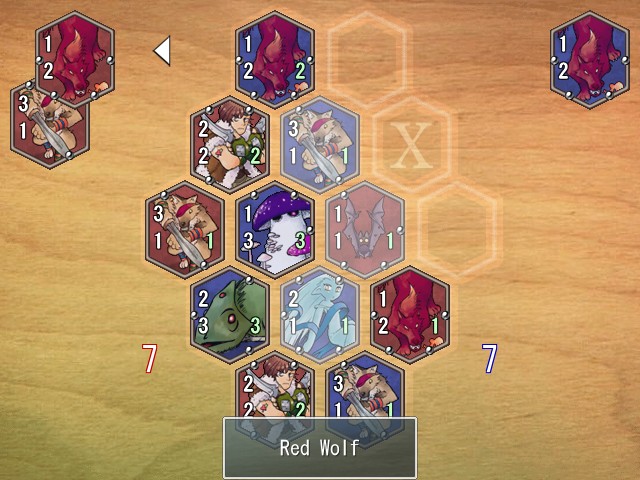
Another useful maneuver is to sacrifice one of your own tiles to flip several of your opponent's. With a five-direction reach but only 1 HP, the Air Elemental tile you start the game with is pretty much tailor-made for this, because since being at -10 HP is functionally identical to being at 0, it doesn't matter how many tiles counterattack it. Using a big-reach tile at the right time, like the Bat in the above example, can completely change the course of a game.

Also, while there is certainly a lot of strategy when it comes to placing tiles, your hand selection is a very important consideration as well if you want to win. Since you have to construct your hand before seeing your opponent's, you usually want to create a hand that is useful in as many situations as possible. Generally that means you'll want to have a few tiles that excel in each of the three characteristics: attack, HP, and reach. High-attack tiles can flip tough enemy ones, high-HP tiles can block off parts of the board, and big-reach tiles can flip many enemy tiles at once. That said, it's important to remember that any tile in your hand might eventually get used against you if your opponent flips it, so if you have a killer tile you should make sure you keep it protected, or sacrifice it in a way that gives as little opportunity to your opponent as possible.
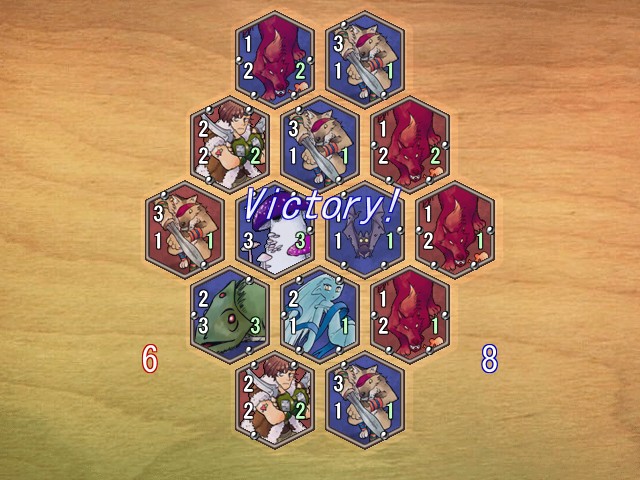
Anyway, despite letting Eugene go up 9-5 early, I manage to squeak out the victory. I know I just posted a lot of
 about Hex, but I should make it clear that I'm hardly an expert on the minigame. In fact, when I first played through Last Scenario I basically ignored it for most of the game, so most of this is new to me. If anyone in the thread wants to give their two cents on Hex strategy, I'd welcome the comments.
about Hex, but I should make it clear that I'm hardly an expert on the minigame. In fact, when I first played through Last Scenario I basically ignored it for most of the game, so most of this is new to me. If anyone in the thread wants to give their two cents on Hex strategy, I'd welcome the comments.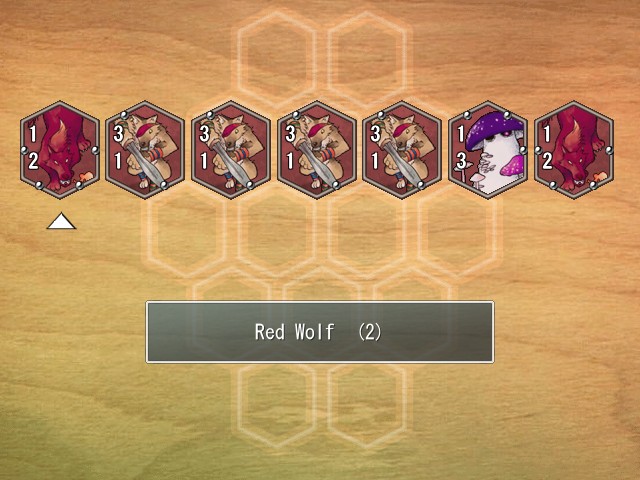
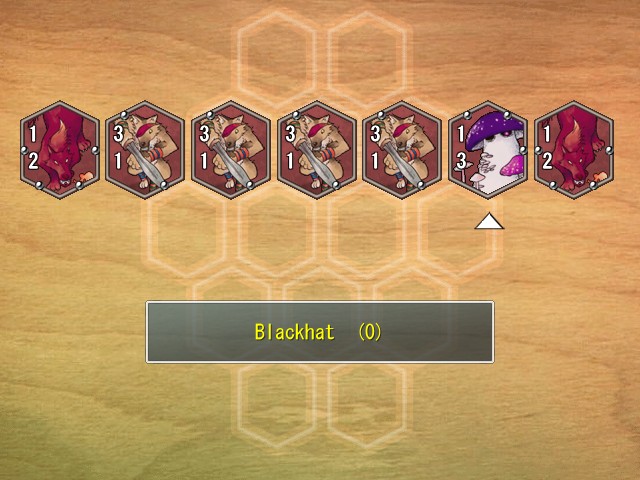
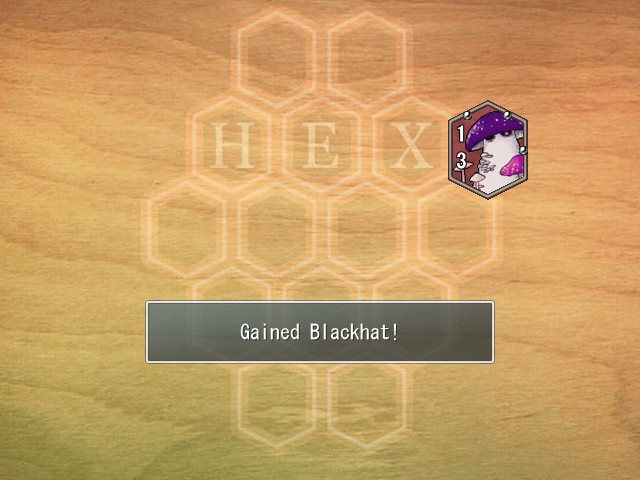
When a Hex game ends in a non-draw, the winner gets to take one of the tiles in his opponent's hand and keep it. If we win, the game will show us how many copies we have of each tile and helpfully point out tiles that we don't own. Eugene's Blackhat isn't in our collection, so I nab it. And yes, before you ask, if we lose, that means we will have one of our tiles taken from us. I believe that the game will remember which NPCs have tiles that we originally owned and give us the opportunity to win them back, but I don't know for certain how that works. Ideally I won't ever have to find out.
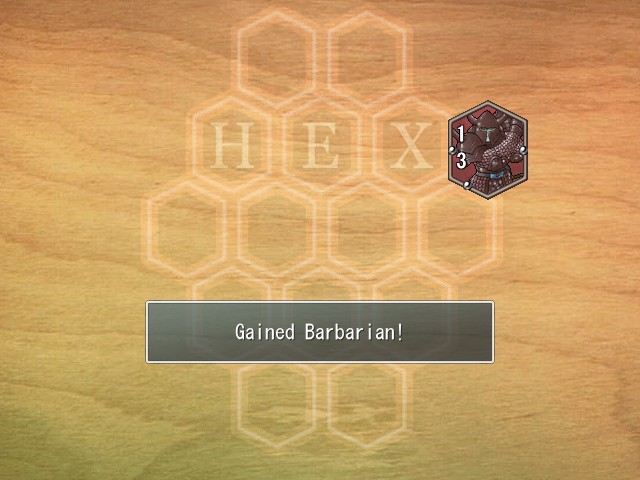

Afterwards, I play a few more games with Eugene and take his Barbarian (also new) and another Blackhat. There's no limit on how many times you can play Hex with a particular NPC, but each NPC only has a limited selection of tile types to draw from, and usually has a couple of tiles that they only have a single copy of. If we want to round out our collection of tiles, we'll need to play Hex with NPCs all over the world.
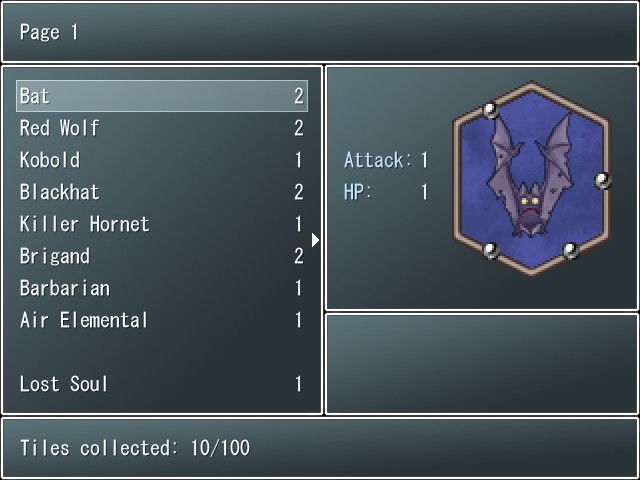
Now all those
 about Hex are well and good, but at this point you're probably asking, what the heck is the point of all this? Well, to begin with, I should point out that while there are some game-relevant things you can do with your Hex tiles, Hex as a whole is entirely (and I mean entirely) optional. You can go through the entire game without playing a single round of Hex.
about Hex are well and good, but at this point you're probably asking, what the heck is the point of all this? Well, to begin with, I should point out that while there are some game-relevant things you can do with your Hex tiles, Hex as a whole is entirely (and I mean entirely) optional. You can go through the entire game without playing a single round of Hex.That said, there are some rewards to playing. First, Hex tiles can be traded for items at special shops, one of which we'll see next update. There's also a small sidequest that involves playing Hex with a particular NPC at various locations around the world. The most important rewards to Hex, though, are obtained after beating the game, and are based on the number of different tiles you obtained throughout the game (and includes tiles you later lost or traded away). Having a high "tiles collected" total will unlock post-game features such as New Game+, artwork, and bonus bosses, and we can see our total in the Hex List menu option at the bottom of the screen.
Now on its face, this seems rather annoying, since it makes it sound as though in order to unlock any of the bonus content, you basically have to be playing Hex from the beginning to get better tiles to use against later players to get better tiles... and so on, and if you haven't been playing, welp, too bad, you have to start from the beginning. But it isn't actually as cut-and-dried as that, because most bosses and the occasional regular enemy will drop Hex tiles as well. This means that no matter when you decide to start or stop playing Hex, you'll always have a decent (if sparse) collection of tiles to use against the players at that point in the story.
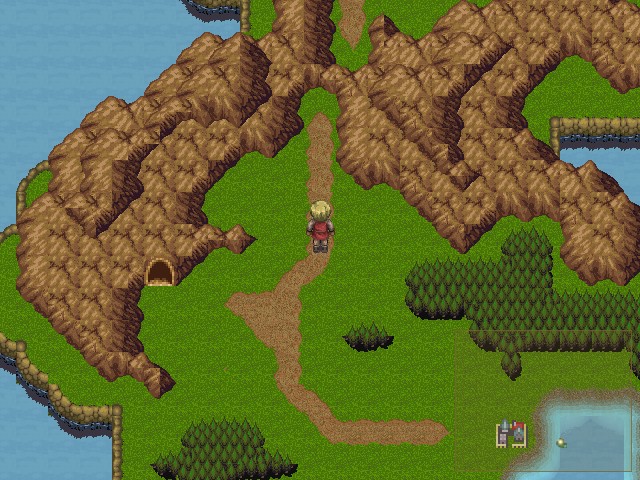
Now then, it's time for us to head north and join the army. We'll be seeing that next update.
Next time: We see if Zawu's claims hold up.